Teff (or tef) is a remarkable grain. It is a tiny seed, less than 1 mm in diameter, making it smaller than a poppyseed.
Just one cup of turf is enough to sew an entire field, and it survives in both droughts and water bogged land.
It's proper name is Eragrostis tef, and it is native to the seminomadic areas of Ethiopian, where is a staple in the diet.
Teff is most commonly fermented to make injera, which is a risen flat bread and one of the most popular foods in Ethiopia.
Each year, Ethiopian farmers plant almost 1.4 million hectares of teff, and they produce 0.9 million tons of grain, or about a quarter of the country's total cereals (1).
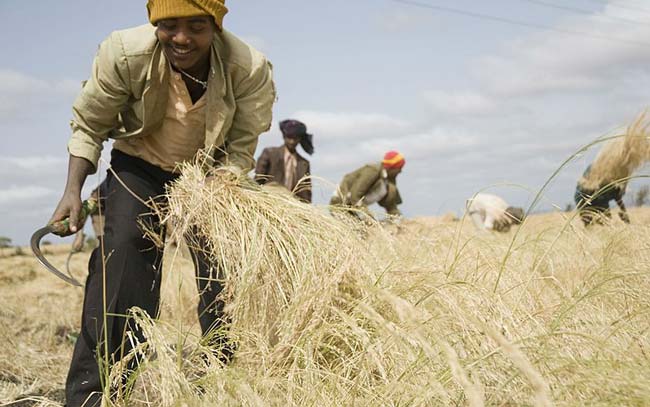
Ethiopian farmers harvesting teff grain.
Teff: Nutritional Benefits
Like all whole grains teff packs in a number of nutritional benefits.
Teff is high in calcium, which contributes to the maintenance of normal blood clotting, promotes normal muscle function and is needed for the maintenance of strong bones and teeth.
Teff contain significant levels of vitamins C. Vitamin C contributes to the maintenance of normal immune system, and collagen formation for the function of bones, cartilage, blood vessels, teeth and skin.
Teff grain also contains copper, which contributes to the maintenance of normal connective tissues. Copper also contributes to normal iron transport through the body and age the function of a healthy immune system.
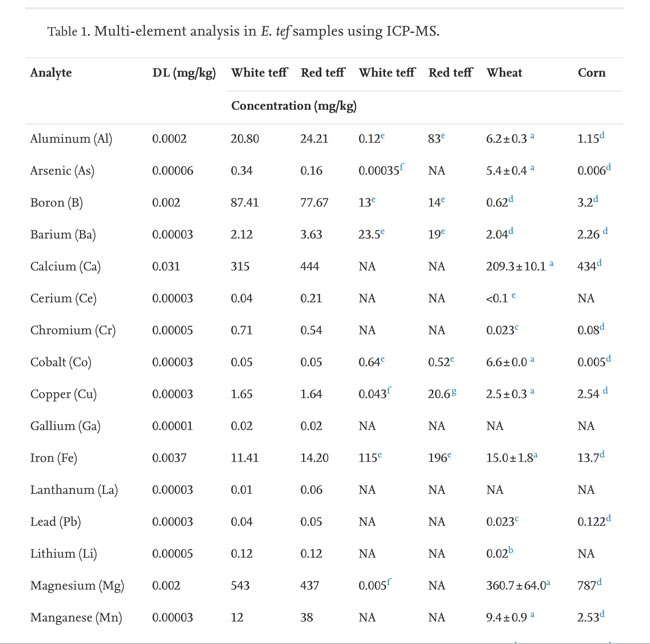
As you can see from the element analysis of Teff above it contains calcium, copper, cobolt, iron and magnesium in good amounts (2).
Teff Protein Content & Amino Acids
Teff contains 8 different amino acids.
Amino acids are the building blocks of protein and are essential for growing muscle, maintaining muscle and for the maintenance of normal bones. Amino acids also play a role in wound healing and tissue repair.
Teff is rich in the amino acid lysine. Lysine is thought to protect against and treat cold sores, help reduce anxiety, improve calcium absorption and retention and aid in wound healing.
Half a cup of uncooked teff contains 12.8g of protein. It also contains 7.7g of fiber, and is rich in B vitamins.
As seen above it is a good source of many minerals including calcium, copper, iron, magnesium, manganese, phosphorus, potassium, and zinc.
Teff has a similar protein content to other more common cereals like wheat, but is relatively richer than other cereals in the essential amino acid lysine. Teff is also a good source of essential fatty acids, fiber, minerals (especially calcium and iron), and phytochemicals such as polyphenols and phytates. (3)
Teff Glycemic Index (GI)
Teff grain scores low on the glycemic index (GI). This means it does not cause a spike in blood sugar and will keep you feeling fuller for longer.
Teff contains approximately 20 to 40 per cent resistant starches. This means it is a better choice for diabetics better to help regulate their sugar levels.
Teff is also low in sugar, salt and fat, and is gluten-free – making it an ideal grain for those who have a gluten intolerance.
How to Cook Teff Grain & Make Injera Bread
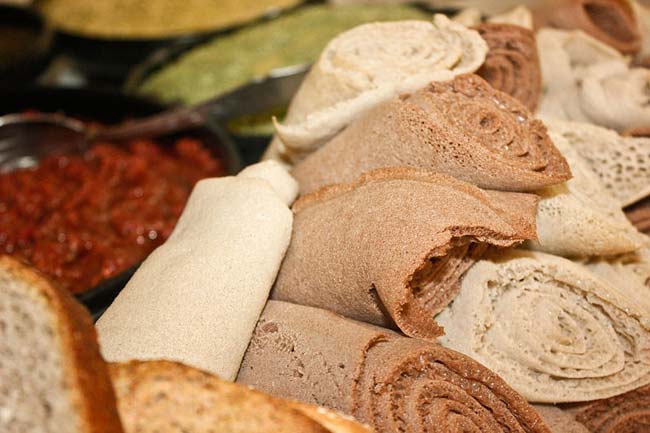
Ethiopian Injera bread made with Teff. See the recipe below.
You can use turf as both a grain and a flour.
To cook teff as a grain:
- Add half a cup of turf to 2 cups of boiling water
- Reduce the heat to a simmer and cover the saucepan
- Simmer for 15 to 20 minutes or until the water is fully absorbed
Tip: You can mix teff in with other whole grains, or use it as a replacement for rice, pasta or couscous.
Teff can make a good breakfast option too. You can use teff for porridge and serve with nuts and raisins, and cinnamon to taste.
You can even mix teff with cocoa and add strawberries and blueberries to make a desert.
To use teff as a flour you can simply buy in flour form or grind it at home.
=> Buy Teff Grain & Ground Flour Here
One study looked at the effect of substituting teff in varying percentages for flour in wheat bread. The study found that a substitution of 5 percent teff flour maintains acceptable taste, texture and aroma (4).
How to Make Injera Bread
Teff is made into injera, a flat, spongy, and slightly sour bread that looks like a giant bubbly pancake. The idea is to tear off pieces and use them to scoop up stews served as the main mean.
To make the Ethiopian Injera bread, do the following.
- Mix 1 cup of teff flour with 1/2 cup of warm water in a bowl
- Cover the bowl with a paper towel for 24 to 48 hours at room temperature
- Once finished, pour off the water that has risen to the top
- Add half a teaspoon of salt and mix in the bowl
- Pour half a cup of the batter into a medium frying pan and cook for 2 to 3 minutes until you see holes appear on the top of the bread
- Once the surface of the bread is dry, remove it from the pan and leave to cool.
This recipe will make 4 Injera breads.

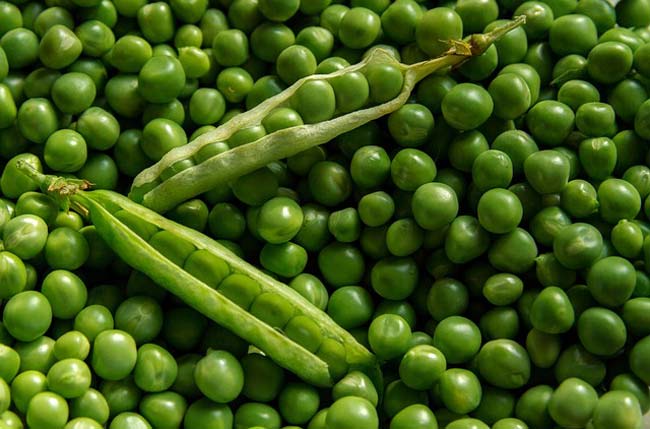

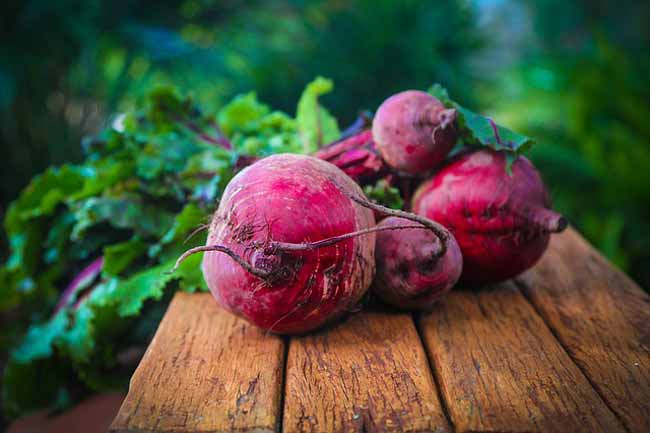
I have a premature boy aged 5 he is also shivering when bathed so please help with the food to eat and to grow tall and fit
Nov 01, 2019 at 7:17 pm
Plenty of whole grains, green vegetables, other vegetables, starchy vegetables like sweet potatoes, squash, pumpkin, etc; plenty of berries; lots of different fruits; beans, lentils (legumes); nuts, seeds. There’s a free app called Daily Dozen. Use this to track these foods each day. The portions are set for adults but you can just use it to remember what foods to include.
Nov 04, 2019 at 10:32 am